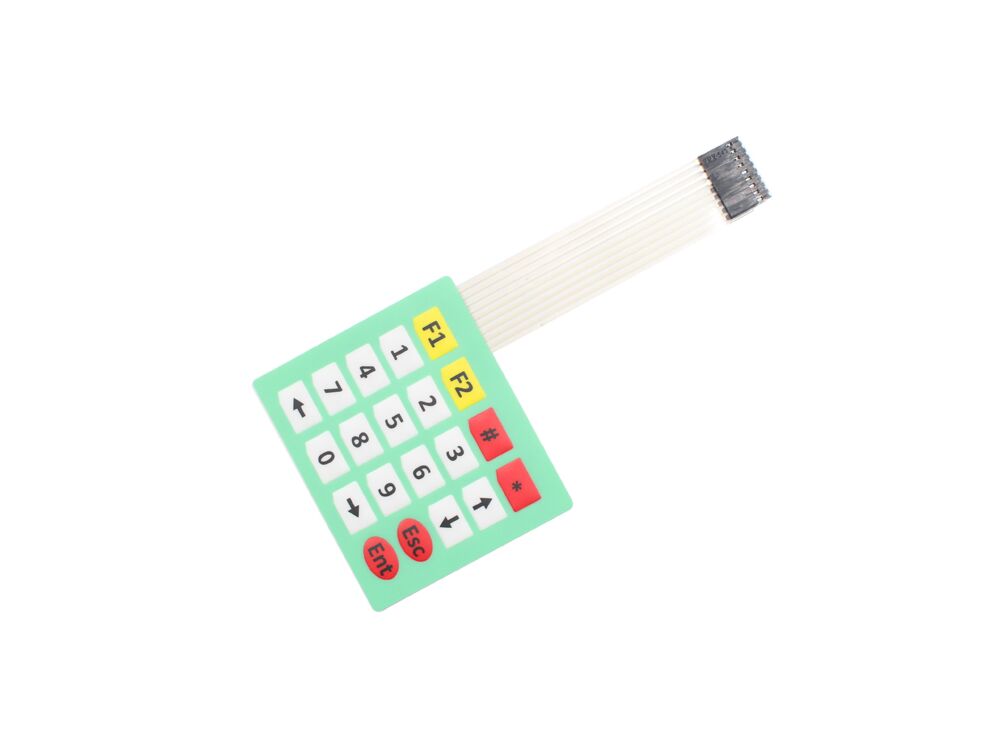Explore the Benefits of Using a Membrane Switch in Modern Devices
Explore the Benefits of Using a Membrane Switch in Modern Devices
Blog Article
Comprehending Membrane Switches: The Key to Durable and Reliable Controls

What Are Membrane Layer Switches?
Membrane buttons are an innovative solution in the world of interface innovation, integrating functionality and style seamlessly. These gadgets work as an interface between users and electronic systems, integrating several elements into a compact format. Commonly constructed from flexible, thin layers of materials, membrane layer buttons are made to respond to touch, enabling users to interact with machinery and electronic gadgets effectively.
The key elements of a membrane button include a published circuit layer, graphic overlay, and a spacer layer that stops unintended activation. The graphic overlay can be customized to reflect brand identity or individual preferences, boosting looks while guaranteeing use. Membrane layer switches are frequently utilized in various applications, including medical tools, consumer electronics, and industrial tools, owing to their resilience and resistance to ecological elements such as moisture and dirt.
One of the vital benefits of membrane switches is their ability to stand up to damage, making them ideal for high-traffic environments. Furthermore, they are light-weight and need very little room, permitting innovative styles in product development. Generally, membrane changes stand for a functional and effective option for modern-day digital user interfaces, weding modern technology with user-centric style concepts.
How Membrane Layer Switches Job
The operation of membrane switches hinges on a straightforward yet efficient device that translates customer input into electronic signals. When a customer presses the button, the top layer flaws, permitting a conductive aspect in the circuit layer to make contact with a matching conductive pad on the underside of the visuals overlay.
The layout of membrane buttons can differ, however they often incorporate domes or responsive elements to give comments to the customer, boosting the general experience - membrane switch. The products made use of in membrane layer buttons, such as polyester or polycarbonate, add to their sturdiness and resistance to ecological aspects, consisting of wetness and dirt. The published circuits are typically enveloped, which protects them from wear and tear over time.
Benefits of Membrane Layer Buttons

Additionally, you could check here membrane layer switches are known for their resilience. Created from durable products, they are resistant to dirt, dampness, and physical wear, which dramatically expands their lifespan compared to standard mechanical switches. This longevity makes them especially appropriate for high-traffic environments and applications needing durability.
Another considerable benefit is the convenience of cleansing and upkeep. The smooth surface area of membrane layer changes decreases dust build-up and is often resistant to spills, making them optimal for setups that require regular sanitization.
Moreover, membrane switches use a streamlined account, causing a thinner style that can be incorporated into numerous gadgets without including mass. This attribute not just improves the visual allure but additionally adds to an extra ergonomic item layout.
Applications of Membrane Buttons
Straightforward and flexible, membrane layer buttons discover applications throughout a variety of markets, consisting of medical gadgets, consumer electronic devices, and industrial equipment. In the medical area, these buttons are integral to tools such as diagnostic devices, patient tracking systems, and infusion pumps, where reliability and simplicity of cleansing are important. Their ability to endure harsh atmospheres and maintain capability makes them ideal for such applications.

In customer electronics, membrane switches are made use of in products like microwaves, washing equipments, and push-button controls - membrane switch. Their sleek style allows for instinctive interface, improving the general individual experience while supplying durability and resistance to tear and click put on
Commercial tools also benefits from membrane layer switches, specifically in control panels for machinery and automation systems. These switches supply defense against dust and wetness, making certain constant efficiency in difficult environments. Their customizable attributes permit makers to customize them to certain operational demands, enhancing performance and capability.
Picking the Right Membrane Switch Over
When picking a membrane button, it is vital to take into consideration various variables that affect efficiency and viability for specific applications. The main factors to consider consist of ecological conditions, responsive feedback, toughness, and design specifications.
First, evaluate the operating environment; switches revealed to moisture, chemicals, or severe temperature levels require certain products to make certain long life and capability. Next, examine the demand for responsive comments. Depending upon customer communication, some applications might take advantage of a tactile reaction to confirm activation, while others might choose a non-tactile design for aesthetic reasons.
Longevity is an additional crucial element; membrane layer buttons should be created to hold site up against constant usage, impacts, and abrasion. Ensure the chosen button can sustain the anticipated lifecycle, specifically in high-usage circumstances.

Verdict
In final thought, membrane switches over offer as important components in the style of dependable and resilient control systems across various markets. The adaptability of membrane layer switches over enables for customized options that meet certain operational demands, strengthening their importance in modern-day innovation.
Membrane layer switches over stand for a crucial element of modern interface style, blending capability with resilience in different applications.Membrane layer buttons are an advanced solution in the world of individual interface innovation, combining functionality and layout seamlessly. Typically created from adaptable, slim layers of materials, membrane switches are created to respond to touch, allowing users to engage with equipment and electronic tools successfully.
The design of membrane layer switches can differ, yet they frequently incorporate domes or tactile elements to offer feedback to the user, improving the general experience.In conclusion, membrane switches offer as necessary parts in the design of reliable and resilient control systems across numerous industries.
Report this page